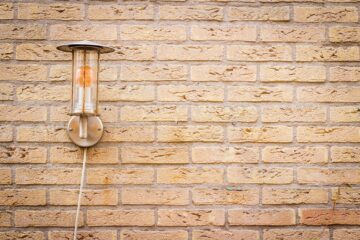Painting a designed door is a big challenge for making this easier we put. Different tools and technics are applied for painting a door. We will provide you with useful steps that you can follow.
Tools
1. Bucket: Bucket is a watertight vertical cylinder-shaped semi-circular caring bail. The bucket is usually used as a container.
2. Orbital sander: Orbital sander is off tiny circles that randomly orbit and used for smoothing and sanding. A random orbital sander is used for various applications.
3. Dust musk: A dust mask is a disposable filtering face musk that protects respirators from dust and gases.
4. Paint a roller: Paint rollers are paint application that offers painting rapidly and efficiently. Paint rollers are consisting of two parts that are frames and cover.
5. Paintbrush: A paintbrush used for applying accurate paint on something like ink thicker or thinner paints are applied with various available sizes of brushes.
6. Paint scraper: Paint scrapper is a flat steal bleed with a Handle of wood or metal. They remove wallpaper or paint, and it is like a screwdriver.
7. Rags: A piece of cloth torn from a larger one that is used for cleaning. It is also used for applying paint in different colours.
8. Putty knife: Putty knife is a small bleed hand tool used for applying materials feeling or drywall taping and scrapping residues.
9. Roller tray: A roller tray is a traditional tool for rolling and vaping rolling trays also used as a cleaner assist.
10. Roller sleeve: Roller sleeve designed to help paint a short pile roller smoothening the flat surface of the door or even plastered wall.
11. Shop vacuum: A shop vacuum is a special kind of vacuum consist of high-power motor-driven used for cleaning. It is also used in woodworking. And even in a construction project.
12. Sanding block: It is used for holding sandpaper. It is simplest in form; the user wraps the sandpaper around the block.
13. Shop light: Shop lights are the newest LED version of fluorescent shop lights. It provides longer lifetimes and lowers electric consumption.
14. Utility knife: The utility knife is a fixed bleed knife with a cutting edge. It is used for scrapping, finishing, edging, and other tasks.
15. Tweezers: It is a small tool used for picking small objects from anything. It is easy to handle with fingers.
Materials
1. Paint: You need to pick a paint that covers too coating at least. You may use neutral or classic paint colour for your door.
2. Foam brushes: Foam brushes are designed to absorbing all kinds of paints and stains. It helps to give a smooth finish, and it can be used once.
3. Primer: A Primer is nucleic acid utilizes in painting undercoats. It ensures better adhesion to the surface during painting.
4. Paint weep remover: Paint weep remover removes latex from trim, wall, and floors. It saves the paint from damage.
5. Sandpaper: Paper with abrasive stuck of sand or another material is called sandpaper. It is used for polishing and smoothening woodwork surfaces.
6. Sand able filler: It is a spray full of paint. It fills minor holes on the surface and sands smoothly for making superior topcoats.
7. Sanding sponges: It is similar to sandpapers and used to smooth objects’ texture. The grit level of sanding sponges varies from average to extremely rough.
Picking The Paint
Paint colour and sheen are to be selected carefully. Scuff marks are hard to wipe, and high glossy is easy to wipe. So, your colour picking should be perfect. Painting a door takes on average up to 4 hours and add drying time with that. So, it is a whole day project.
Painting Tips
Below is a setp-by-step guide to help you paint your door.
1. Take your door outdoor because if you lay your door flat, you can minimize the running job.
2. To clean the door with normal regular household cleaning tools. The knob area should be especially clean.
3. Remove all the hardware from the door. It will give a cleaner paint job and saves time.
4. Fill the small holes with sandable filler. You have to fill deep holes twice to avoid shrinkage.
5. Slice for painting buildup around the hinges.
6. Remove the paint from the hardware, starting with new paint. You can use strippers to remove the old coating.
7. Sandpaper or sanding sponge will roughen the surface. Now, apply the primer that will be better adhere to.
8. Smooth out holes and imperfections from the previous paint. It might be a time-consuming part of the work.
9. Be sure to buy sandpaper designed for painting. Without the right sandpaper, it might be clogging.
10. Use a vacuum brush to remove the dust. Wipe off the others with a damp rag.
11. Prime the coat with light across the surface at a low angle to find the imperfections. Fill it with masking tape if there is any left.
12. Apply paint that will give smooth finishing enamel coating will be smoother. But often, super smooth paints cost more. For extra smoothness, use water base alkyds.
13. These paints dry slowly after applying with a roller. Skip brush pout for getting the perfect result. Clean up is easy, but you have to wait for a day.
14. For priming and painting, put on your door on a workbench where airborne dust will not reach.
15. Minimizing ventilation in the room might slower the drying process.
16. Use the work light above your door to avoid overhead lighting. This low angle light helps you find the ridges.
17. Consider painting with slowing to dry and improve the smoothening. Start with a smooth and dust-free door by wiping with the rag before painting.
18. Paint the four edges, and better to face the slops on the door before painting. Heavy coat paints a better level, but the brush is deeper. Use high-quality enamel and rollers sleeves to get a super smooth result.
19. Apply at least two coats of colour—and between the coats to remove any dust.
20. Most skilled people rarely match the perfection of the spread painting finish. Spray painting can apply the flawless coating in no time. So, use the spray in the final section of the painting.
Doors are the best introductory to your style and taste of aesthetic interior. We hope the tips allow you to make further decision with your door painting details.
If you need help painting a door or house feel free to give us a call. We are professional, trusted and reliable painters and decorators based in London.


